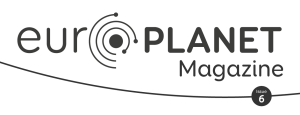Supporting Astronomy in Ukraine
Gražina Tautvaišienė (Vilnius University, Lithuania), describes how a Europlanet programme is supporting Ukrainian colleagues to continue their research.
Read article in the fully formatted PDF of the Europlanet Magazine.
Two years on from the Russian invasion, the plight of our colleagues in Ukraine remains a concern for the scientific community. The exhausting war affects both human and economic resources. Scientific work additionally requires a normal psychological environment. However, how can you concentrate on the scientific work if air raid sirens are wailing several times a night and you have to run to a hideout with the elevators not working?
Tired of such a situation, astronomer Leonid Pilyugin, from the Main Astronomical Observatory (MAO) of the National Academy of Sciences of Ukraine (NASU) in Kyiv, turned to me for help. I immediately said that he can come to Vilnius for asylum. He is of the older generation, so the ban on leaving Ukraine did not apply to him. A number of female scientists were also able to leave the dangerous environment and found refuge in the world’s scientific centres. But the vast majority of men and women have had to stay and defend, or be ready to defend, their country and care for their loved ones.
The Europlanet 2024 Research Infrastructure (RI) project wanted to support fellow astronomers who remained in Ukraine. After coordinating with the European Commission, we initiated a scheme whereby Ukrainian scientists could leave and continue their research in scientific centres located in safer areas of Ukraine. To date, we have supported 13 visits of 30 days.
Through the Europlanet scheme, we were able to support a young researcher Maryna Ishchenko from MAO in Kyiv. She wished to work on investigations of the stellar globular clusters using data provided by the Gaia Space Telescope. She determined orbital parameters for 160 globular clusters and analysed their possible relatively-close approaches to the supermassive black hole located in the centre of the Milky Way. An interesting conclusion was reached that, at a relatively-close distance of 50 parsecs from the galactic centre, we could expect on average about 3–4 globular cluster close passages every billion years. The results were published in the main European astronomy research journal Astronomy and Astrophysics.1
Maryna was among several Ukrainian scientists who had the opportunity to attend the meeting of the European Astronomical Society (EAS) held in 2023 in Krakow. It was very nice to meet her in person.
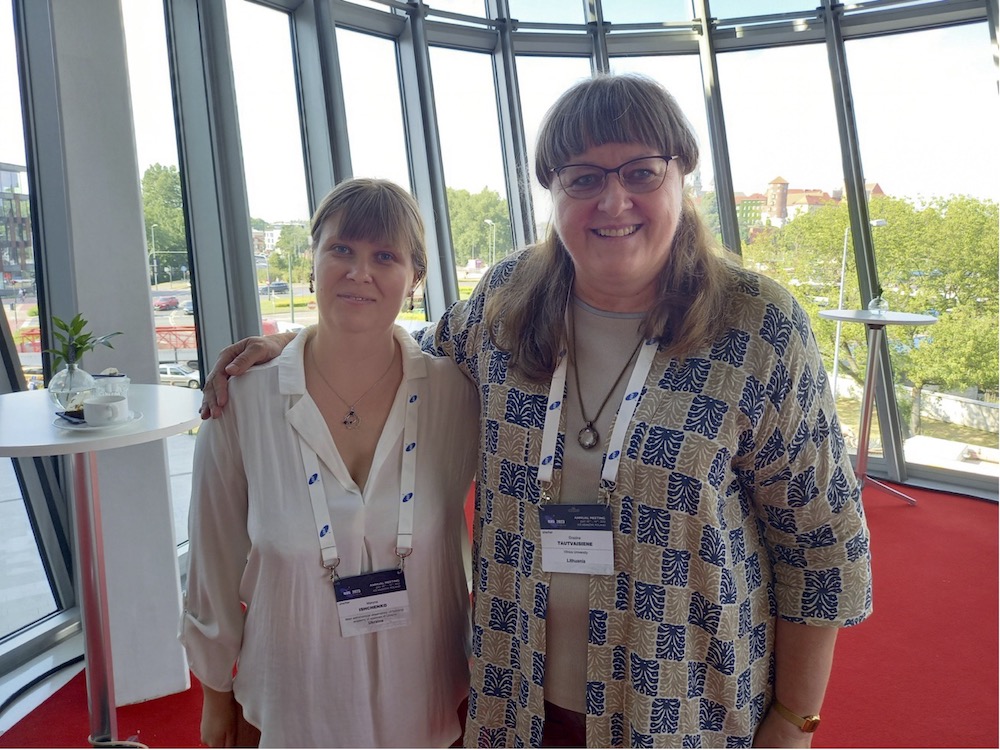
Anna Velichko, a young researcher from the Institute of Astronomy of V. N. Karazin of Kharkiv National University (KhNU), had the opportunity to leave probably one of the most dangerous regions in Ukraine and visit her colleagues at MAO in Kyiv. There she learned new techniques for working with large amounts of data and analysis of stellar kinematics in our Galaxy using the Gaia Space Mission data. As part of the educational programme, she visited the museum of MAO located in the pavilion of the Toepfer Double Long-Focus Astrograph. The observatory has a long and eventful history, dating back to when it was founded in 1944.
Vasyl Shevchenko from the Institute of Astronomy of V. N. Karazin KhNU visited the Astronomical Observatory of Lviv, Ivan Franko National University. There Vasyl continued his work on the creation of the Kharkiv database of absolute magnitudes of asteroids. An article on a comparative analysis of the Kharkiv database with other datasets was prepared and published in Astronomy and Astrophysics in October 2022.2
In addition, Vasyl lectured online for students of the V.N.Karazin KhNU and discussed with the staff of the Astronomical Observatory of Lvivabout further joint scientific and educational work.
Sergey Velichko from the Institute of Astronomy of V.N.Karazin KhNU had an opportunity to collaborate with colleagues at MAO and the Astronomical Observatory of Lviv concerning the identification, and study of sites with anomalous properties of regolith on the lunar surface. He developed a new technique for photometric reduction of high-resolution images obtained with the Lunar Reconnaissance Orbiter Narrow Angle Camera (LRO NAC). The results of LRO NAC image-processing for Irregular Mare Patches were obtained using a new method of geometric and photometric data correction, taking into account local topography at the resolution level of the original frames. A discussion was held on the development and realisation of the new method of mineralogical composition mapping by combining the ‘Shkuratov’ spectral mixing model with machine learning. The results have now been published in the journal Planetary and Space Science.3,4
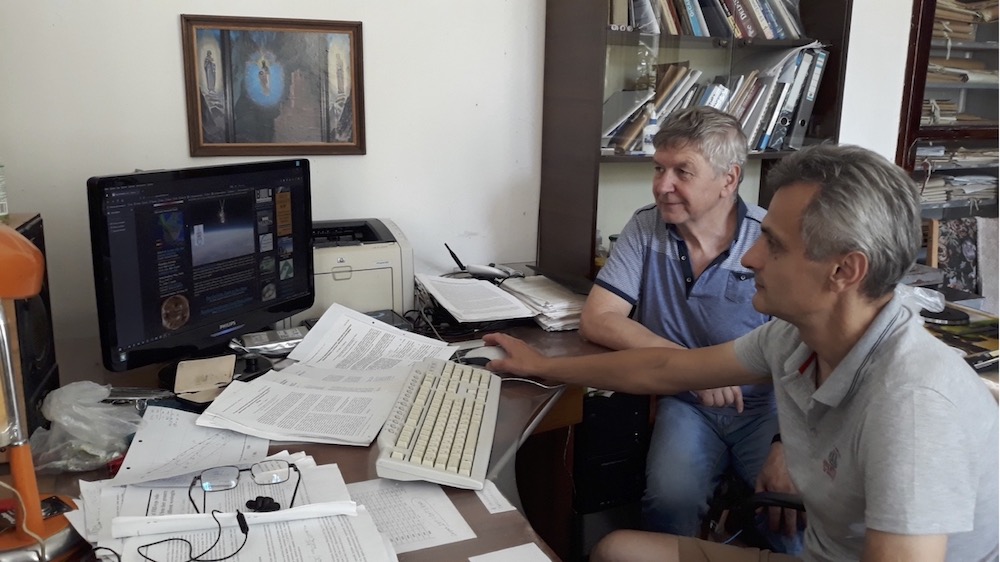
Valerii Shepeliev from the Institute of Radio Astronomy of the National Academy of Sciences of Ukraine (IRA NASU) escaped Kharkiv several times to visit the Poltava Gravimetric Observatory of the S. I. Subbotin Institute of Geophysics of NASU.
Valerii is leading the radio interferometric team at IRA NASU, which conducts observations using five radio telescopes from the Ukrainian VLBI URAN network, which also includes the URAN-2 radio telescope in Poltava. The team is studying the fine structure of galactic and extragalactic radio sources such as quasars, radio galaxies and supernova remnants. They also conduct interferometer studies of the angular structure of the quiet Sun and manifestations of its sporadic activity using short-baseline interferometers. With the telescopes UTR-2 (the world’s largest decametre telescope observing at wavelengths of 10s of metres), URAN-1 in Kharkiv, and URAN-4 in Odesa, they used to observe scintillations (fluctuations in intensity) of radio signals from cosmic sources passing through inhomogeneities of interplanetary plasma, and ionospheric scintillations, which can be used to study the solar wind and its interaction with the Earth’s ionosphere. Unfortunately, the main instrument of the URAN network, UTR-2, was located in the combat zone and was occupied by the Russian army in March 2022. After about six months, the Armed Forces of Ukraine liberated the territory of the Radio Astronomy Observatory where UTR-2 is located. However, they found it in a horrible state. Much of the radio and computer equipment has been destroyed or looted, with the Observatory buildings badly damaged or destroyed.
During his visits to the Poltava Gravimetric Observatory, Valerii discussed possibilities for the restoration of the instruments, and worked on past results of joint Very Long Baseline Interferometry (VLBI) studies. As a result, a database of observed extragalactic radio sources has been compiled. Data processing for the 3C239 radio galaxy has been completed, and its structure at decametre wavelengths has been established. An extended halo, which is absent at higher frequencies, has been discovered and the synchrotron age of the radio galaxies has been determined. Preliminary results of observations of sporadic decametre radio emission of Jupiter, associated with Io, were discussed, as well as studies of the Earth’s ionosphere and the solar wind, which are carried out using the URAN-1 and URAN-4 radio telescopes in an autonomous mode. The research results were presented during the Gamow Conferences in 2022 and 2023, and several scientific papers are in preparation.
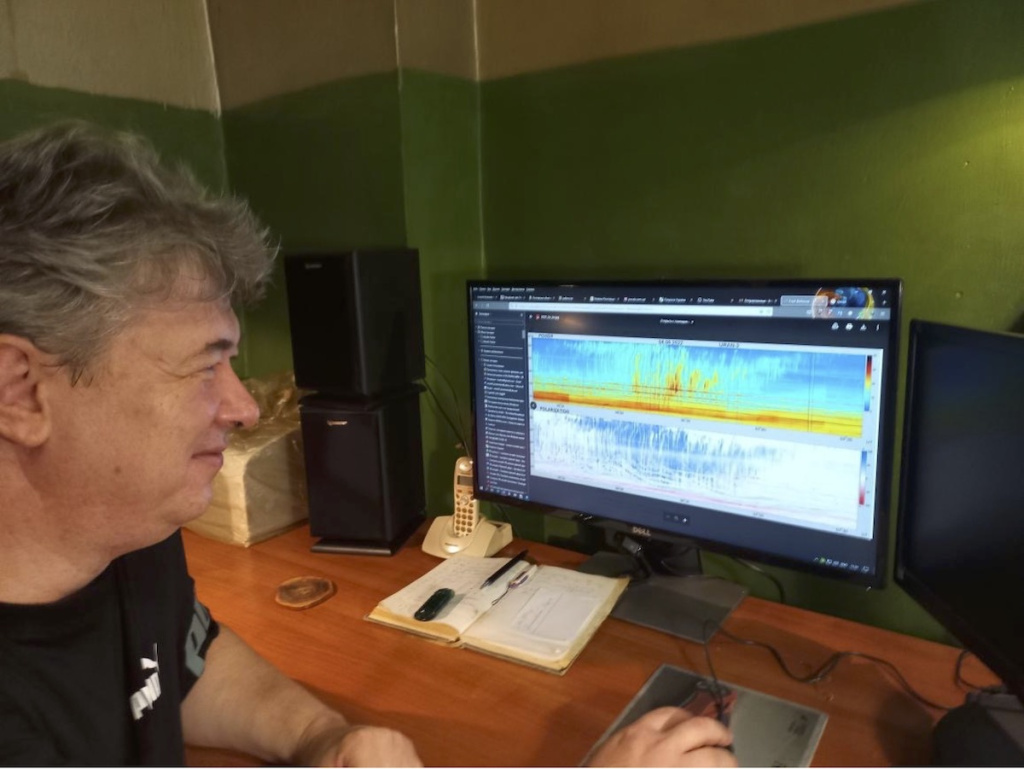
Vyacheslav Zakharenko, Director of the IRA NASU, also visited the Gravimetric Observatory in Poltava where the URAN-2 radio telescope is still operational. After the start of the war, URAN-2 took over 60-70 percent of the programme that was conducted by the damaged UTR-2. Most importantly, URAN-2 took over the ground support programme for the Juno space mission.
Every 43 days, the telescope (along with a large number of others facilities), observes Jupiter’s radio emission at the moment of perijove (closest approach to the planet’s centre). It is important to compare the faintest components of the radiation between the spacecraft and ground-based telescopes. There is also an ongoing programme studying Jupiter’s decametre radiation. Ukrainian astronomers work closely on this with their French colleagues at the Nançay Decameter Array (NDA) and NenuFAR radio telescopes, of which they are co-developers. Vyacheslav’s results were presented at the international conference ‘Planetary, Solar, and Heliospheric Radio Emissions’ in 2022. The results were also published in Radio Physics and Radio Astronomy and the Journal of Physical Studies.5,6
During his trip, Vyacheslav not only worked on the URAN-2 data, but also completed the long-term development of the UTR-2 radio telescope radio-frequency interference mitigation programme.
Volodymyr Dorovskyy (IRA NASU)and his colleagues have participated in the ground-based support of the Parker Solar Probe space mission (PSP) since its launch in 2018. Before the war, support consisted of observations with UTR-2 of the solar radio emission during the PSP perihelia. When observations with this telescope became impossible, Volodymyr and his colleagues decided to use the smaller Ukrainian radio telescope, URAN-2. Volodymyr visited the Gravimetric Observatory in Poltava and conducted solar observations during the perihelion #13 in September 2022. The joint analysis of the solar bursts, simultaneously observed by the ground-based and space instruments, will be done as soon as the PSP data are available online.
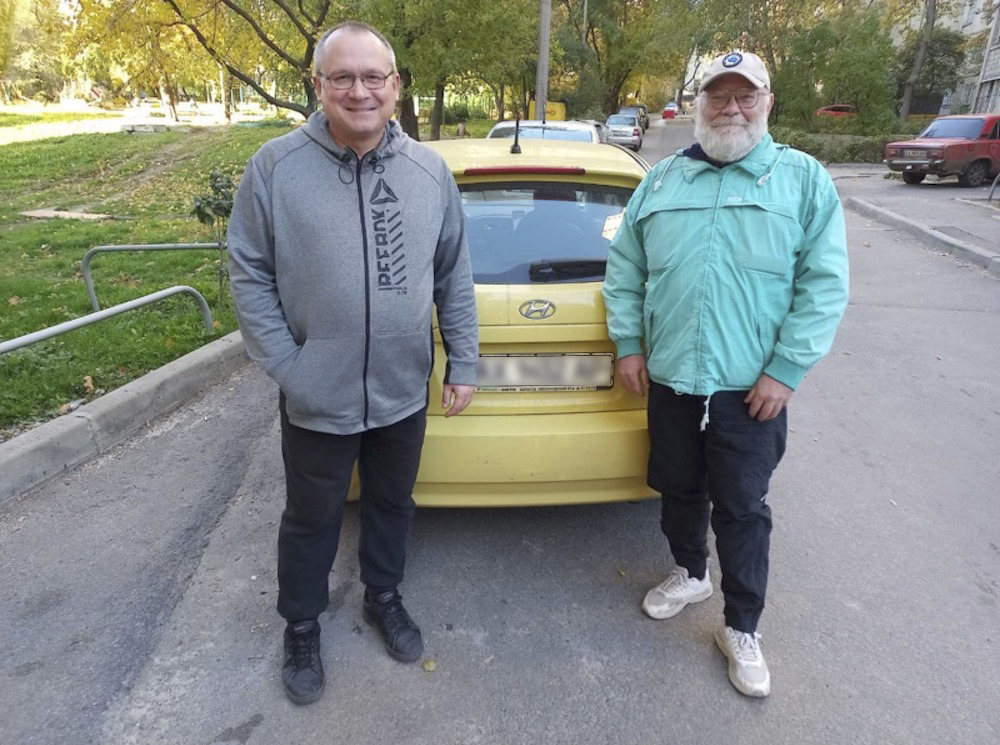
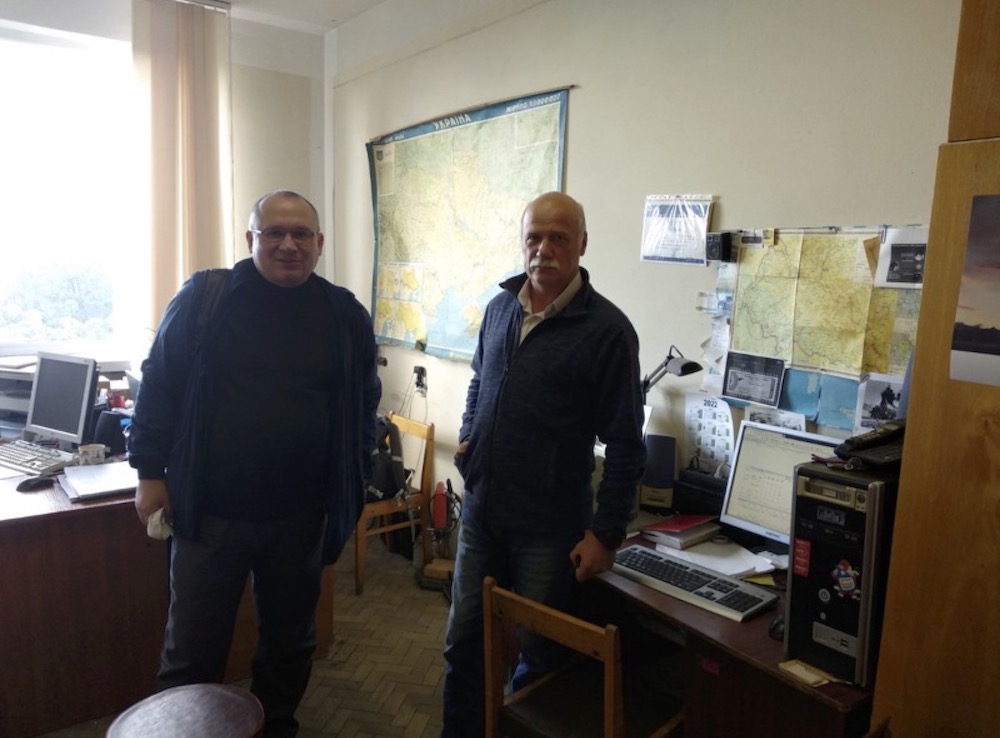
Andriy Zalizovskyy, Head of Department of Radiophysics of Geospace, together with the junior scientist Volodymyr Lisachenko, both from IRA NASU, visited the Regime Geophysical Station (RGS) ‘Nyzhne Selyshche’, Carpathian branch of S.I. Subbotin Institute of Geophysics of NASU.
Access to the locally available instrumentation had been lost because of the war. The main task of the trip was to restore the evaluation of provisional K indices (a measure of the severity of geomagnetic storms) in near real time using the geomagnetic data of RGS, located in relatively safe western part of Ukraine, as well as evaluation of the parameters of geomagnetic pulsations. The data, published on the department’s website, are the only provisional K indices available in near real time from the territory of Ukraine.
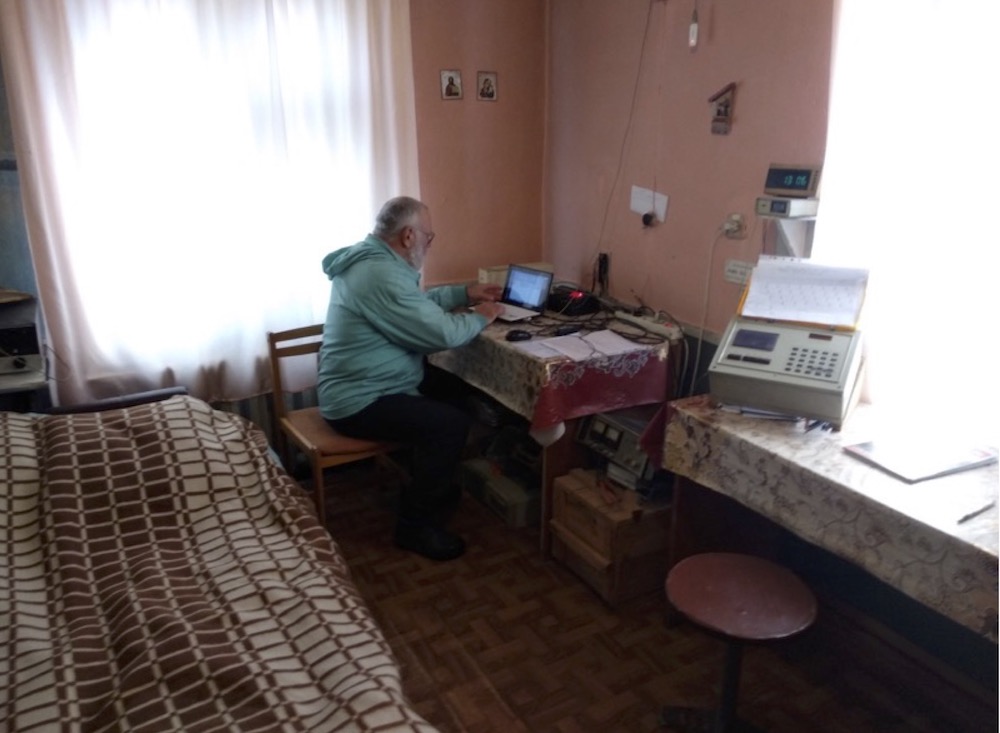
Conclusion
Astronomers in Ukraine, like many other professionals, are facing significant challenges during the war, which has led to infrastructure damage, brain drain, and resource constraints, including funding cuts for scientific research. This hinders the ability of astronomers to conduct experiments, maintain observatories, and engage in international projects. Travel restrictions, safety concerns, and political tensions make it difficult for Ukrainian astronomers to collaborate with colleagues from other countries.
However, despite these challenges, many scientists in Ukraine continue to persevere and contribute to their fields. They rely on international partnerships and support from the global scientific community to mitigate the impact of war on their research. It is important that the international community continues to support them.
References
1. Ishchenko et al, 2023. https://doi.org/10.1051/0004-6361/202245753
2. Shevchenko et al, 2022. https://doi.org/10.1051/0004-6361/202243977
3. Surkov et al, 2024. https://doi.org/10.1016/j.pss.2023.105831
4. Korokhin et al, 2024. https://doi.org/10.1016/j.pss.2024.105870
5. Ryabov et al, 2024. https://doi.org/10.15407/rpra
6. Konovalenko et al, 2024. https://doi.org/10.30970/jps.28.1902

